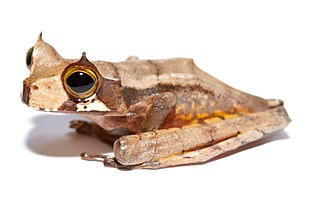
In naval terminology, a destroyer is a fast, maneuverable, long-endurance warship intended to escort larger vessels in a fleet, convoy, or carrier battle group and defend them against a wide range of general threats. They were originally conceived in 1885 by Fernando Villaamil for the Spanish Navy as a defense against torpedo boats, and by the time of the Russo-Japanese War in 1904, these "torpedo boat destroyers" (TBDs) were "large, swift, and powerfully armed torpedo boats designed to destroy other torpedo boats". Although the term "destroyer" had been used interchangeably with "TBD" and "torpedo boat destroyer" by navies since 1892, the term "torpedo boat destroyer" had been generally shortened to simply "destroyer" by nearly all navies by the First World War.

A modern torpedo is an underwater ranged weapon launched above or below the water surface, self-propelled towards a target, and with an explosive warhead designed to detonate either on contact with or in proximity to the target. Historically, such a device was called an automotive, automobile, locomotive, or fish torpedo; colloquially a fish. The term torpedo originally applied to a variety of devices, most of which would today be called mines. From about 1900, torpedo has been used strictly to designate a self-propelled underwater explosive device.
The Star Trek fictional universe contains a variety of weapons, ranging from missiles to melee. The Star Trek franchise consists mainly of several multi-season television shows and a dozen movies, as well as various video games and inspired merchandise. Many aspects of the Star Trek universe impact modern popular culture, especially its fictitious terminology and the concept of weaponry on spacecraft. The franchise has had a widespread influence on its audiences from the late 20th to early 21st century. Notably, Star Trek's science fiction concepts have been studied by real scientists; NASA described it in relation to the real world as "entertaining combination of real science, imaginary science gathered from lots of earlier stories, and stuff the writers make up week-by-week to give each new episode novelty." For example, NASA noted that the Star Trek "phasers" were a fictional extrapolation of real-life lasers, and compared them to real-life microwave based weapons that have a stunning effect.

Issyk-Kul is an endorheic saline lake in the western Tianshan Mountains in eastern Kyrgyzstan, just south of a dividing range separating Kyrgyzstan from Kazakhstan. It is the eighth-deepest lake in the world, the eleventh-largest lake in the world by volume, the deepest lake whose deepest point is above sea level, and the third-largest saline lake. Issyk-Kul means "warm lake" in the Kyrgyz language; although it is located at a lofty elevation of 1,607 metres (5,272 ft) and subject to severe cold during winter, it rarely freezes over due to high salinity.

The electric rays are a group of rays, flattened cartilaginous fish with enlarged pectoral fins, composing the order Torpediniformes. They are known for being capable of producing an electric discharge, ranging from 8 to 220 volts, depending on species, used to stun prey and for defense. There are 69 species in four families.

The family Torpedinidae contains 22 species of electric rays or torpedoes, flat cartilaginous fishes that produce electricity as a defense and feeding mechanism. They are slow-moving bottom-dwellers.

Gastrotheca is a genus of frogs in the family Hemiphractidae. They are found in Central America south of Costa Rica and in South America. Most species occur in the American Cordillera from southern Costa Rica to north-western Argentina. This genus makes up the bulk of marsupial frog diversity; formerly it was placed in the "Leptodactylidae" assemblage.

Philautus is a genus of shrub frogs in the family Rhacophoridae from Asia. Some species in this genus are now considered extinct by IUCN, while others are widespread and abundant. The taxonomy of the group is unclear, with many poorly described species.

Torpedo is a genus of rays, commonly known as electric rays, torpedo rays, or torpedoes. They are slow-moving bottom-dwellers capable of generating electricity as a defense and feeding mechanism.

Mount Salak is an eroded volcano in West Java, Indonesia. It has several satellite cones on its southeast flank and the northern foot, along with two additional craters at the summit. Mount Salak has been evaluated for geothermal power development. According to a popular belief, the name "Salak" is derived from salak, a tropical fruit with scaly skin; however, according to Sundanese tradition, the name was derived from the Sanskrit word Salaka which means "silver". Mount Salak can be translated to "Silver Mountain" or "Mount Silver".
Gastrotheca microdiscus is a frog species in the frog family Hemiphractidae. It is endemic to southeastern Brazil between southern São Paulo and Santa Catarina states. Its natural habitats are undisturbed primary forests. It is a canopy species hiding in bromeliads. It is not considered threatened by the IUCN.
Philautus microdiscus is a species of frog in the family Rhacophoridae. It is endemic to India, only known from Abor Hills in Arunachal Pradesh. This little-known species inhabits tropical moist lowland forests.

Amphipholis is a large genus of brittle stars (Ophiuroidea) found in oceans worldwide from tropics to Arctic and Antarctic regions. Some species have been used to study echinoderm development and bioluminescence.

The common torpedo, also known as ocellate torpedo or eyed electric ray, is a species of electric ray in the family Torpedinidae. It is found in the Mediterranean Sea and the eastern Atlantic Ocean from the Bay of Biscay to Angola, and is a benthic fish typically encountered over soft substrates in fairly shallow, coastal waters. Growing to 60 cm (24 in) long, this species has a nearly circular pectoral fin disc and a short, thick tail with two dorsal fins of nearly equal size and a large caudal fin. It can be identified by the prominent blue spots on its back, which usually number five but may vary from zero to nine, as well as by the small knobs on the rims of its spiracles.

The Atlantic torpedo is a species of electric ray in the family Torpedinidae. It is found in the Atlantic Ocean, from Nova Scotia to Brazil in the west and from Scotland to West Africa and off southern Africa in the east, occurring at depths of up to 800 m (2,600 ft), and in the Mediterranean Sea. Younger individuals generally inhabit shallower, sandy or muddy habitats, whereas adults are more pelagic in nature and frequent open water. Up to 1.8 m (6 ft) long and weighing 90 kg (200 lb), the Atlantic torpedo is the largest known electric ray. Like other members of its genus, it has an almost circular pectoral fin disk with a nearly straight leading margin, and a robust tail with a large triangular caudal fin. Distinctive characteristics include its uniform dark color, smooth-rimmed spiracles, and two dorsal fins of unequal size.

Trinucleidae is a family of small to average size asaphid trilobites that first occurred at the start of the Ordovician and became extinct at the end of that period. It contains approximately 227 species divided over 51 genera in 5 subfamilies. The most conspicuous character is the wide perforated fringe of the head.

Lars Gabriel Andersson was a Swedish schoolteacher and herpetologist.
Asterias microdiscus is a starfish native to the Pacific coasts of Far East Russia.

Zygometra is a genus of crinoids within the family Zygometridae. Members of this genus are found at depths of 10 to 162.5 meters in the Indo-Pacific around countries such as Australia, Indonesia, Malaysia and the Philippines.















